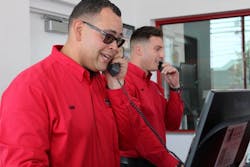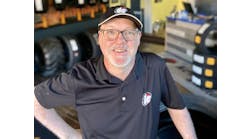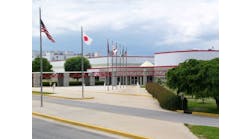This MTD exclusive was provided by Dennis McCarron, a partner at Cardinal Brokers, one of the leading brokers in the tire and automotive industry (www.cardinalbrokers.com) and author of MTD’s monthly Business Insight column.
In 2022, professional training is a critical must. As an industry, we don’t train nearly enough. To retain good employees, they need to know that they are being paid fairly and have been given the tools to do the job right.But first, a word on some conditions. There’s an old phrase, “You can’t send a duck to eagle school.”
If a person does not like their job or isn’t career-oriented, spending money on quality training for them is a waste. The people who go to training should look forward to improving their craft and they should be willing to use the tools provided to them.
Second, not all training is equal. Quality training is a combination of at least two key factors — the program clearly identifies desired outcomes and uses multiple methods of training delivery. Desired outcomes are specific, measurable results of completing the training. “Sell more” is not a desired outcome.
A proper desired outcome for sales training looks more like this: “Attendees will be able to demonstrate the method of active listening by using tools such as summary, open-ended and reflection questions.”
If a training program does not list proper desired outcomes, it likely won’t solve your training needs.
Some methods of training delivery are lecture, group discussion, role play, gamification and case studies. If a program only has one type of delivery, it is not likely that the learner will retain enough of the information to put into use back inside your store.
Once you find a quality program, it’s time to assess your employees. Those with attitude issues or general disinterest in a career should be removed from your list first.
Next, assess who benefits the most from training. The level of “sales ability” is a good tool. Level-one salespeople are individuals who when first hired likely attended a lot of product and service training. They acquired a lot of knowledge about the stuff they sell. When a customer comes through the door and requests a product or service, they regurgitate all the features.
The main issue with this is that it provides the customer with ready-made “no’s”. They don’t need this feature, they don’t need that feature, etc. The closing rate for a level-one salesperson is usually low.
The primary skill for someone at this level to develop is active listening. Get the customer to talk more, while the employee says less. If they do that, they will elevate themselves to level-two, which I call “the friend.”
Once you start listening to customers, human behavior dictates that we become empathetic. However, the problem with being friends with customers is that it usually involves discounting. What the friend needs to learn is price integrity. This means the price you state is the price of the product. This requires showing level-two salespeople that if they discount a product, they are admitting that the first price offered was a lie. And you don’t build trust on lies.
Once they learn this, they elevate themselves to level-three. Salespeople at this level gird their nerves and defend price. But sometimes they do this at the expense of the relationship with the customer.
“Sorry, my boss says the price is the price,” is not the right approach. A good salesperson needs to learn how to present options.
“Good-better-best” is a common tool for a salesperson at this level.
Level-four salespeople are what I call “needs satisfiers.” They listen more than they talk, they ask many intelligent questions and they present only the information that will help a customer make decisions.
This salesperson satisfies both the customer’s needs and his employer’s needs.
Level-five salespeople are consultants. At this level, trust has been developed between the employee and the customer and the customer now asks lots of practical questions. The customer will even seek out the salesperson by name.
Level-six salespeople are partners. Interestingly, at this level, communication between the salesperson and the customer begins to dwindle, as the customer fully trusts the salesperson to do the right thing.
Many times, it’s a toss of the keys, a quick comment on the issue and then “just call me when it’s done.” There is very little discussion on cost or time.
I would encourage training level-one and level-two salespeople in-house, as it’s simple. Level-three and level-four salespeople have the most potential to grow and are worthy of your training dollars.
Level-five and/or level-six status is typically achieved by wanting to be the best for your company and customers.
Start identifying the strengths of your salespeople and “level” up accordingly.
Dennis McCarron is a partner at Cardinal Brokers, one of the leading brokers in the tire and automotive industry (www.cardinalbrokers.com). To contact McCarron, email him at [email protected]




